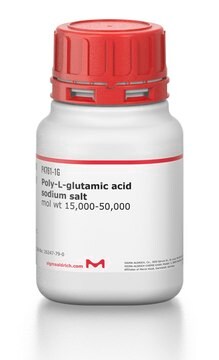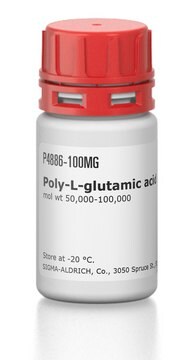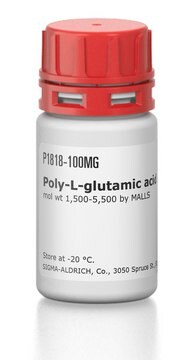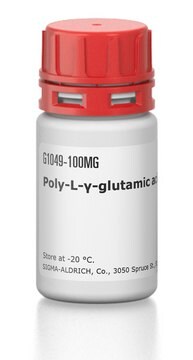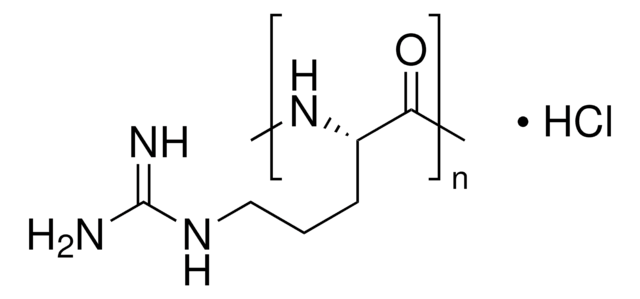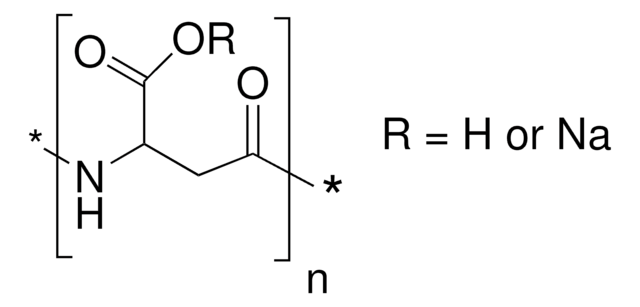P4636
Poly-L-glutamic acid sodium salt
suitable for ligand binding assays, Mol wt 3,000-15,000
Sinónimos:
L-Glutamic acid homopolymer sodium salt
About This Item
Productos recomendados
Nombre del producto
Poly-L-glutamic acid sodium salt, mol wt 3,000-15,000
Formulario
powder
Nivel de calidad
mol peso
3,000-15,000
técnicas
ligand binding assay: suitable
color
white to off-white
temp. de almacenamiento
−20°C
InChI
1S/C15H23N3O10/c16-7(1-4-10(19)20)13(25)17-8(2-5-11(21)22)14(26)18-9(15(27)28)3-6-12(23)24/h7-9H,1-6,16H2,(H,17,25)(H,18,26)(H,19,20)(H,21,22)(H,23,24)(H,27,28)/t7-,8-,9-/m0/s1
Clave InChI
BUZMZDDKFCSKOT-CIUDSAMLSA-N
¿Está buscando productos similares? Visita Guía de comparación de productos
Categorías relacionadas
Aplicación
- Bulk Biopolyelectrolyte Complexes from Homopolypeptides: Solid "Salt Bridges".: Investigates the creation of solid structures from biopolyelectrolyte complexes using Poly-L-glutamic acid sodium salt, emphasizing its potential in creating innovative materials with unique properties (Digby ZA et al., 2023).
- Polymeric Core-Shell Nanoparticles Prepared by Spontaneous Emulsification Solvent Evaporation and Functionalized by the Layer-by-Layer Method.: This research utilizes Poly-L-glutamic acid sodium salt in the production of core-shell structured nanoparticles, indicating its utility in nanoparticle functionalization and stability (Szczęch M et al., 2020).
Nota de análisis
Otras notas
Clase de riesgo para el agua (WGK)
WGK 3
Punto de inflamabilidad (°F)
Not applicable
Punto de inflamabilidad (°C)
Not applicable
Equipo de protección personal
Eyeshields, Gloves, type N95 (US)
Elija entre una de las versiones más recientes:
¿Ya tiene este producto?
Encuentre la documentación para los productos que ha comprado recientemente en la Biblioteca de documentos.
Artículos
Humankind has utilized protein materials throughout its existence, starting with the use of materials such as wool and silk for warmth and protection from the elements and continuing with the use of recombinant DNA techniques to synthesize proteins with unique and useful properties.
Nuestro equipo de científicos tiene experiencia en todas las áreas de investigación: Ciencias de la vida, Ciencia de los materiales, Síntesis química, Cromatografía, Analítica y muchas otras.
Póngase en contacto con el Servicio técnico